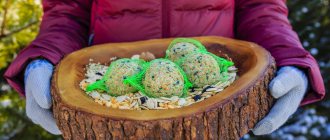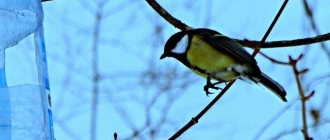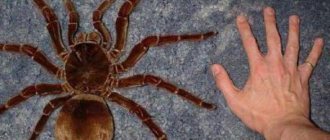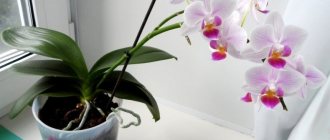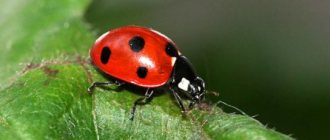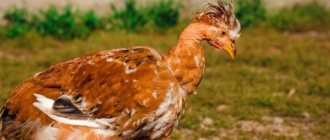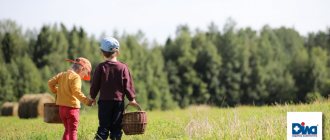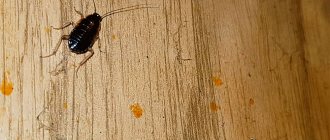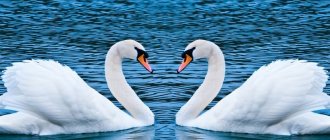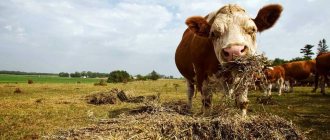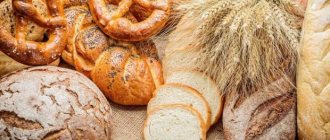Whether a swan is a migratory bird or not, most people cannot say, since they know practically nothing about this bird. They cannot answer where the swans spend the winter. In fact, these birds are the largest waterfowl, most species of which migrate to warm regions for the winter.
Whether a swan is a migratory bird or not, most people cannot say, since they know practically nothing about this bird
Migratory and non-migratory species. Where do swans winter?
During its life, a swan manages to fly around and see half the world, overcome enormous distances, but always returns to the same places of nesting, wintering and molting.
Its distribution areas are in Eurasia, North and South America, Australia and Asia. In short, different species live almost all over the world. There are 7 species in the world:
- Black swan (CYGNUS ATRATUS)
Range: Australia, Tasmania and New Zealand.
It is not a migratory bird.
- Black-necked (CYGNUS MELANOCORYPHUS)
Range: South America.
Wintering areas: Paraguay and southeastern Brazil.
- Mute swan (CYGNUS OLOR)
Range: northern Europe and Asia, Australia and South Africa.
Wintering areas: northern Caspian Sea, Mediterranean, Africa, Asia Minor, Arabia, Iran, Afghanistan, India and China.
- Trumpeter Swan (CYGNUS BUCCINATOR)
Habitat: tundra of North America, southern Alaska.
Wintering place: Pacific coast of Canada.
- American (CYGNUS COLUMBIANUS)
Habitat: forest-tundra of North America.
Wintering areas: California coast and Florida.
- Small (CYGNUS BEWICIKII)
Habitat: exclusively on the territory of Russia in the tundra of the European and Asian parts of the country.
Wintering place: they fly to the countries of north-western Europe (Great Britain, France and the Netherlands), as well as to the countries of southern and south-east Asia (China, Japan and Korea) for the winter.
We also recommend reading:
- Whooper swan (CYGNUS CYGNUS) Range: Eurasia;
Wintering areas: in Central and South Asia (India, Caspian Sea) and in the south of the Mediterranean. Only a few of these birds do not fly south, but remain to winter in their homeland, and if they do, it is only if there is a sufficient amount of food and an unfrozen surface of the reservoir chosen for wintering. Winter finds such swans most often in reservoirs and warm water canals of power plants in large cities, where they flock from frozen ponds and rivers.
The main reason for the migration of this bird is the lack of food supply in winter and severe frosts.
Swans, like geese and ducks, fly away to their wintering grounds in October–November, the last of the migratory ones, and delay their departure almost until the water bodies freeze completely, when the rivers are already covered with a crust of ice.
Gallery: types of swans (25 photos)
Flight
Swans fly away in flocks; during the flight they form a wedge, which sometimes consists of several hundred birds. On the way, they try to stay along the shore of the reservoir. Swans fly mainly in the morning and afternoon, at an altitude of 50–100 meters. From time to time, the flock makes stops at reservoirs to feed and rest. The swan is the largest flapping bird.
The weight of an adult bird is up to 12 kilograms; a significant weight load on the wing makes it difficult for the bird to take off, and it has to paw through the water for a long time, gaining height. Ornithologists have found that one flock of swan can travel about 3 thousand kilometers in 3 days, making only two stops along the way.
Brief description of nesting
Males and females practically do not differ in appearance, but their coloring is dazzling white, gray or black. Even their voices are the same: shrill, trumpet-like. When the bird is irritated or defending itself, it hisses menacingly at the enemy.
They settle in rivers, lakes, sea lagoons and estuaries heavily overgrown with coastal and aquatic vegetation.
It feeds on various parts of aquatic plants (leaves, buds, bulbs, roots), obtaining them from the bottom in shallow water, as well as mollusks, worms, small crustaceans, and insects, which it collects on the surface of the water. In terms of their method of obtaining food, swans are in many ways similar to a goose or duck: they lower their heads under the water and place their bodies vertically, so that only the back half of the body remains on the surface of the water.
The nest is built in shallow water in reed thickets from reed stems, with mandatory free access to clean water. This is a rather massive structure, up to 2 meters in diameter and with a tray on top. The inside of the nest, like that of a duck, is lined with grass and down.
Interesting Facts:
- The oldest mute swan was discovered in Denmark; it lived for 40 years. The “long-living record holder” was ringed on February 21, 1970 in northern Germany.
- Bird ringing was invented by the Danes in 1899.
- In Denmark, ringing began in 1928, after the almost complete extermination of the population.
- The bird is the symbol of the state of Western Australia and is depicted on the coat of arms of the city of Canberra, the capital of Australia.
- In Finland it is the national bird.
- In England it was declared the royal bird 600 years ago.
A drop in temperature and the lack of usual food forces birds to leave their usual places of life in winter; for this reason, many species of birds are migratory.
The list of such birds is huge, but you need to clearly know which are migratory birds, which can be called conditionally migratory, and which are always sedentary.
Migratory birds:
- martin;
- lapwing;
- song thrush;
- robin;
- lark;
- flycatcher;
- finch;
- dawn;
- garden warbler;
- kingfisher;
- redstart;
- hoopoe;
- bittern;
- wagtail;
- oriole;
- nightingale;
- black-headed warbler;
- swan;
- goose;
- duck;
- rook;
- crane;
- capercaillie;
- grouse;
- pika;
- crossbill.
Pictures with names for children, which depict birds flying south in winter, most often represent cranes. But a huge number of birds leave their habitat, except for these birds, and they do not do this immediately, but each species at a certain time.
General description of white birds
White swans belong to the duck family, the goose subfamily; their closest relatives are the goose and goose. Most individuals have white feathers. Black and Australian swans have black feathers. The South American bird has almost the entire neck and head black, and the body and base of the neck are white.
The wingspan is up to 200 cm. The maximum weight of the bird is about 19-21 kg. The smallest individual weighs -7 kg. The male and female are practically indistinguishable in external characteristics. By species, birds differ in feather color and size.
An interesting feature of white individuals is that they exist as a married couple. The couple is located on some site. The territory where birds settle en masse is no longer as protected by individuals as in a certain area.
In large settlements, handsome whites treat other individuals favorably and calmly. The bird itself is quite patient and balanced. In a comfortable and safe environment, birds swim slowly and are silent.
Only in case of danger and conflict do they bite, scream, flap their wings, and strongly stretch their necks. If a white bird hits its wing with maximum force, then as a result, a person’s arm may be broken.
Some migratory birds: pictures with names and order of flight to the south
Birds whose food consists only of insects are the earliest to leave their place of residence. This is logical, because it is the insects that begin to hide or die with the onset of cold weather.
Migratory bird wagtail, photo
Behind them, those birds whose food is flowers, seeds, and fruits rush to the southern regions. They do this somewhat later than insectivores, and this is understandable: fruits and seeds are available for food for a very long time, until it becomes completely cold and there is no solid snow cover on the ground.
At the same time, birds fly away, which have a mixed diet in summer and only plant food in autumn. For example, this is a siskin - aphids and other small insects are gone in the fall, and it completely switches to seeds. Migratory bird siskin, photo And the last to escape the cold are the birds living on reservoirs when the surface of rivers and lakes is covered with ice. Among waterfowl, by the way, there is a tendency towards conditional migratory behavior: if the winter is warm and the water does not freeze, they do not fly anywhere. Waterfowl migratory birds: pictures Among birds that feed on plant or “live” food on land, conditional migratory behavior can also be observed. For example, these are jays and waxwings: the further south they live, the less often they leave their habitat in winter.
The ecological meaning of bird flights
If we apply an analogy from human life, the question arises about where migratory birds live on a permanent basis - where they feed in winter, or where they raise their chicks.
Migration is a way to reduce the load on the food supply of its species to such an extent that it is possible to ensure constant growth of the flock at the expense of chicks.
In winter, swans leave places with an excellent food supply, which becomes inaccessible in winter. By flying to places where there is no winter, they just wait out the winter. There, in reservoirs crowded with different inhabitants, it is possible for adult individuals to feed themselves for some time, but it will not be possible to raise offspring in the quantities necessary for the reproduction of the species. There are too many competitors and predators here.
Famous migratory birds: pictures, names, main wintering places
Common cuckoo. From Central Asia and Siberia, these birds flock to the southern part of the Sahara in Africa. From England and northern Europe, common cuckoos fly to southern Africa, reaching even South Africa. Russian, Ukrainian and Scandinavian starlings fly to the south of Europe. Sometimes they cause great inconvenience to residents of southern European countries in winter. For example, in Italy during the winter months they make so much noise that they drown out the roar of traffic in cities. If we talk about cranes, their flight range is very wide. The Caucasus, the Nile Valley, northern and western India, Iraq - these are not all the wintering places of cranes. Almost all nightingales fly to Africa for the winter, mainly to western Africa, but they try to stop in countries south of the equator. The swan is the largest bird living on water and the largest migratory bird. For the winter, Russian swans fly to the Mediterranean and Caspian seas, to the south of the Asian coasts. Swallows, all their varieties are migratory. From the West they fly to sub-Saharan Africa for the winter, while from the East they fly to China and areas adjacent to the Himalayas. Rooks, which inhabit almost all of Eurasia from Scandinavia to the Pacific coast, fly away relatively close in winter. Russian rooks flock to Turkey, from Europe - to Italy and France, Volga rooks - mainly to Kazakhstan. Watch a video about migratory birds.
Swan habitat
White individuals prefer to settle in areas where the climate is temperate and in tropical areas. They belong to waterfowl, and therefore live mainly in various types of water bodies. They feed there, in shallow water, on various mollusks, small crustaceans, fish and vegetation.
Most bird species live in the northern hemisphere, the black species lives in Australia and New Zealand. The black-necked swan, or as it is otherwise called the South American swan, is found in fresh waters in the south of South America, where it nested.
Black-necked birds do not live in the following countries:
- Asia;
- Central America;
- Northern regions of South America;
- Africa.
Zoologists note that the whooper species lives on the Eurasian continent, mainly in its northern part. In countries such as Iceland, Scotland, a number of Scandinavian countries, also in the territory from Kamchatka to eastern Sakhalin, on the Black, White and Baltic seas.
The whooper occupies territory mainly on the water. Prefers large lakes that are overgrown with grass, reeds and reeds along the edges of the banks, or on remote lakes in the forest. It happens that they are located on the sea coast in areas overgrown with reeds.
They settle in bodies of water near places where people live. If swans live close to people, they should not be disturbed.
The mute lives further south than the whooper swan. Occupies the southern and central European zone, as well as most of Asia. Mute swans, like other types of swans, are located in remote estuaries and overgrown lakes. Swans are also spotted in the swamps.
Migratory Birds: A List for Children
Almost everyone knows from school that birds are divided into those that fly away and those that remain.
Any bird is a warm-blooded animal and can survive a drop in temperature. But not every bird can find food for itself in cold weather. Those who are able to feed themselves in the winter remain. The rest fly away.
The list of migrating birds includes:
- Woodpecker.
- Pika.
- Flamingo.
- Heron.
- Pelican.
- Rook.
- Waxwing.
- Wagtail.
- Bullfinch.
- Orekhovka and a number of others.
Migratory birds do not leave their homes all at the same time. The beginning of their wanderings depends on several reasons:
- From the habitat.
It is known that almost all birds that live in the tundra are migratory, and in the taiga - about ¾. In forests, only half of the birds leave their homes. Therefore, as soon as the temperature drops, birds such as woodpeckers, nuthatches and pikas move to the territory of Kazakhstan.
There are birds that make significant flights within Kazakhstan. For example, with the onset of winter cold, the gray crow moves from the Kazakh forest-steppes to the southern regions.
Birds that live in fields, swamps and ponds all fly south. Thus, in the fall, flamingos, herons and pink pelicans leave Kazakhstan.
- From the food supply to which the birds are accustomed.
The first to leave their usual habitats are those birds that feed on insects. For example, rooks, who prefer larvae and worms, and wagtails, who love to hunt flying insects.
They are followed by those who are unable to find grain under the first layer of snow, and then by waterfowl. Some birds fly away as a last resort. For example, if there is a fruitful year and little snow falls, the waxwing, bullfinch, butternut and redpoll remain in place.
It is interesting that migratory birds of Kazakhstan fly to different parts of the world:
- More than 130 species of birds fly to Western Asia (Iran, Syria, Afghanistan and other countries). These include: Black-bellied Sandgrouse, Blackbirds, Desert Warbler, Broad-tailed Warbler and Larks.
- India and Africa are preferred by 250 species of birds. These are white storks, gray cranes, galloping buntings, night herons, corncrake and steppe tirkushka.
- The Mediterranean coast is favored by 60 species of birds, including the meadow flycatcher, passerines and pied flycatcher.
There are several versions of why migratory birds return to their habitats:
- Birds want to return to their habitats because they feel discomfort due to increased daylight hours.
- In hot regions there is high humidity and birds are bothered by parasites.
- Birds take care of raising their offspring, and in hot countries it is difficult to find a place to build nests and raise chicks.
Thus, answering a child’s question about which birds fly away in the fall, we can say that these are birds that cannot find food for themselves in winter: thrushes, rooks, cranes, flamingos, herons, pelicans, corncrakes and others.
Migratory birds of Kazakhstan
Diet of swans
Swans are omnivores, although the basis of their diet is food of plant origin. By plunging their heads into the water, using their long necks, they reach the roots of plants, their stems, and young shoots. If at this moment you manage to catch a frog, find worms, bivalves, or catch small fish, then the swan will never refuse this. When these birds come out of the water onto land, just like geese, swans can nibble the grass.
It is important to know! White swans are considered especially voracious, since they can eat so much food in a day that it amounts to 25 percent of the weight of the bird itself.
As a rule, there is always enough food for these birds, although sometimes they still have to starve. This is possible in cases where bad weather sets in for a long time or when the water level in reservoirs rises and birds cannot reach aquatic plants. In such cases, they lose their kilograms and become weak. Even in this case, the birds do not leave their usual habitats in search of more promising ones in terms of food.
Migratory birds that fly south last
The order in which birds migrate to distant lands depends on what the bird eats and where it lives.
Therefore, birds that feed on insects are the first to leave their habitats. The last to fly away are the birds living in bodies of water.
For example, the waterfowl little grebe, which has a long body and short legs, leaves its natural habitat when water bodies begin to freeze. The bird practically does not go to land and even builds nests on the water.
Its relative, the black-necked grebe, which feeds on aquatic invertebrates, also waits for the first frost to begin migration.
The pink pelican, whose adult male weighs up to 15 kg, feeds on large fish. When the temperature drops, the fish go deeper and the pelican is forced to migrate to warmer climes.
The Little Bittern is nocturnal. Prefers to eat small fish and frogs. As soon as cold-blooded frogs stop any activity with the onset of cold weather, and small fish are difficult to get from under the ice crust, the bittern goes to Africa for the winter.
Flamingo, which lives in the Kazakh lakes Chelkartyngiz, Tengiz and a number of others, prefers shallow water with a muddy bottom. With the appearance of an ice crust, he sets off for the winter.
The mute swan, which lives in estuaries and lakes, feeds on aquatic plants and small animals that stick to them. An adult is capable of absorbing up to 4 kg of such food per day.
As water bodies freeze, some birds move closer to human habitations in the hope of getting food. But most prefer to go to warmer climes.
Migratory birds take flight at different times, depending on when their food runs out. The first to fly away are those whose food supply consists of insects. The last ones are waterfowl, which delay their flight until an ice crust appears on the surface of the water.
Natural enemies
Swans are considered quite strong birds, so adult swans do not have many natural enemies. But birds, which are not yet able to protect themselves or escape from danger by soaring into the sky, have many natural enemies. Such predators include the fox, as well as various birds of prey, which can easily spot a swan nest from a height. In other words, any species of predators that live within a given territory are natural enemies.
It is important to know! Wolves and bears pose a particular danger to both chicks and adult birds.
One species of turtle that lives in America also poses a danger to its chicks. Swans living in Australia are constantly attacked by the Dingo dog, which lives only on this continent.
Location of Lake Svetloe
A small lake with warm springs, which attracts birds, is the only wintering place in Russia for swans in a continental climate. The swan reserve still exists in the Anadyr region of Chukotka, in the harsh climate of the Arctic tundra. On maps of the Altai Territory, the famous lake is often designated as Svetloe; the name appeared due to the purity and transparency of the water.
The lake is located south of the village of Urozhainoye, Sovetsky district (about 3 km along the road from the village), its area is 26.6 hectares. The Belokurikha resort is only 40 km away, but along the highway the distance is about 80 km; one-day excursions for winter vacationers are held regularly.
There are no tourist centers near the lake yet; guest houses are available for rent in the village of Urozhainoye. A ski base, the Bely Stan complex, is being built nearby. KBSU "Altaipriroda" conducts excursions for organized groups of tourists. A visit to the lake is included in the “Small Golden Ring of Altai” tour program.
You can see rare birds, which are believed to bring good luck, from November to March or April. Then the isolated population of swans, as scientists have found out, flies to the Salekhard tundra, and when the northern lakes freeze, it returns to Altai with stronger young offspring.
Not far from Swan Lake there are other non-freezing reservoirs where beautiful large birds spend the winter. The largest of them is Lake Koksha with a water surface of 48 hectares, located 4 km northeast of Urozhainy. Because of the clarity of the water, locals call it “Svetly”, which sometimes misleads tourists.
There are much fewer wintering birds and visitors there, so the birds are less timid. Most fairy-tale guests choose Svetloye (Swan), where there are observation decks for visitors.
What temperature do swans tolerate?
Swans, by their nature, are able to tolerate temperatures down to -40°C, ornithologist Vladimir Chuguevsky said on Radio 1. These birds, under the right conditions, can safely remain for the winter. “Swans are considered migratory birds; they fly to warmer regions.
Interesting materials:
What do you call people who talk behind your back? What are the people who write music called? What are the people who write websites called? What are the people who buy coins called? What are people who try alcohol called? What are people called who work for free? What are people called who work for charity? What are people who work from home called? What are people who breed cats called? What are people who breed birds called?
How to get to Swan Lake
From Novosibirsk to the wintering grounds of swans - 420 km, from Barnaul - 220 km. All roads to the lake lead through Biysk, located 68 km away.
The route looks like this: Biysk → Sovetskoe → Lake Svetloe. After the bridge over the Biya River, at the first traffic light in Biysk you need to turn right, towards Belokurikha. Having crossed Katun, at the roundabout take the exit with a sign for Sovetskoye and Altaiskoye. To the village of Sovetskoye, walk a distance of 45 km; at the first turn near the village, turn left. Then drive along Zavodsky Lane, then along Sovetskaya Street, cross the bridge over the Kamenka River and leave the village along Zarechny Lane.
It is 15 km along the asphalt to the village of Urozhainoye, after the settlement you need to turn right and follow the field road that goes around the fields to a large free parking lot. Next, walk about 250 m to the lake shore along the “swan” path.
Entrance is paid (100 rubles), but according to tourists’ reviews, you don’t always have to pay when passing the barrier. A fee of 50 rubles per person is charged for visiting the observation decks; children under six years old are admitted freely. In the parking lot there are tents with souvenirs, selling local honey and hot food - Siberian dumplings, shish kebab, hot tea with pies and pancakes.
Motorists sometimes complain about untimely clearing of snow from roads and poor-quality asphalt - but this is, perhaps, a common problem for the country. Sorrows are quickly forgotten at the sight of majestic snow-white birds.
Winter houses and who lives in them
1 of 15
With the arrival of autumn, the swans are prepared to move to their winter quarters. In Gorky Park there is a spacious and cozy winter house for birds on Maly Golitsynsky Pond. Swans are moved into it only when the temperature outside during the day drops below 10 degrees and at night approaches zero.
According to the livestock specialist, the houses have everything necessary for a comfortable winter. Both heating and ventilation, there are also baths in which birds can bathe all year round. Moreover, panoramic windows overlook the street and there is natural light.
“At sunset, the lights in the house automatically turn off and turn on at dawn. Through panoramic windows, visitors can watch the life of swans all year round, how they eat and look out the window,” said Kazankina.
Swans are fed a balanced diet in winter: grated vegetables - carrots, cabbage, cucumbers, as well as grain, mixed feed, chicken liver. And they especially love corn. Due to the unusually warm autumn, the birds have just moved into warm houses and are looking forward to spring: as soon as the temperature is consistently above 10 degrees, the swans will be released back onto the pond.
Altai Nature Reserve "Swan"
On Lake Svetloe the temperature does not drop below +4…+6 °C even in severe frost. In 1967, for the first time after a many-year break, 15 whooper swans, so called for the characteristic sounds they make, flew to the lake for the winter. Local residents were happy with the long-awaited guests and swan songs - they fed them and took care of them. In subsequent years, the snow-white flock increased, and in 1973 a nature conservation facility was formed - the Swan Sanctuary.
Since 1999, the area of the Reserve has been about 38,200 hectares; it is a life-saving rest zone for animals and birds during hunting. The reserve is the main attraction and pride of the Sovetsky district; on its territory there are:
- lakes Svetloe (Swan) and Koksha;
- section 95 km of the Katun River is a spawning ground for sturgeon fish;
- 70 islands - Katun skerries;
- hills - Talitskaya and Zmeinaya;
- spring at the foot of Zmeinaya Hill.
The efforts of the regional administration and the staff of the Reserve on biotechnical measures and protection are not in vain: the number of wild animals and birds is noticeably increasing. “Swan” is home to 35 species of animals listed in the Red Book of the Altai Territory. In 2016-2017, according to employees, 750 swans wintered in the Sanctuary.
The birds are fed with concentrated feed and grain, which is stored in tens of tons for the winter. Tourists can feed their feathered guests by purchasing bags of food on site. You should not expect grateful birds to take food from your hands - wild birds are very careful and do not swim close to people.
Lake Svetloye is a very small reservoir, its maximum depth is 2 m, width 100 m and length 1000 m. Surprisingly, it accommodates thousands of birds - swans, goldeneyes, ducks, gray geese, and there are also rare mergansers. Whooper swans are peaceful creatures, unlike the silent European relatives of mute swans, who are capable of pecking and drowning each other in the fight for territory or a female.
The best time to observe wary wild swans is before sunset and dawn; by noon, most whoopers leave the lake. Magnificent birds gracefully swimming through the water against the backdrop of Siberian snow are a fascinating sight, confirmed by numerous reviews from tourists.
Peter, Fevronya, ducks and geese
1 of 15
There are also swans in the park on Olonetsky Proezd. There, in the waters of the Yauza River, two young birds, Peter and Fevronya, settled. According to the director of the Babushkinsky PKiO Igor Buskin, they appeared in the park in the spring, and the residents named them that in honor of the Day of Family, Love and Fidelity.
“The swans are very young, they are one and a half years old. Next year we will be expecting offspring, since the reservoir has an extremely favorable habitat for birds,” he explained.
In addition to the white beauties, many other birds live in the park - ducks, geese and pheasants. Park visitors enjoy communicating with them, and children especially like it.
The director of the park explained that in the summer the swans themselves feed on algae, but if necessary, employees feed them with compound feed with vitamins, as well as legumes and cereals. And for living in the cold season, as in Gorky Park, the swans have special rooms. According to Buskin, special insulated structures have been installed for birds.
“Everyone has special fenced-off pens where hay is laid out. We plan to release the birds for walks in the snow in winter, where they will walk around the aviary. And you can look at them,” the director of the park emphasized.
In winter, birds are also fed with mixed feed, cereals, legumes, vegetables and salad leaves. Veterinarians and park staff constantly monitor them and, if necessary, examine them.
They plan to move the swans into insulated pens with the first frost. They will remain there until approximately April, when the first warming occurs, the snow begins to melt and the water area becomes free of ice.
"Fabulous place"
Modern people can no longer do without the Internet; visitors to Swan Lake also share their impressions on information networks. Some excerpts from recent tourist reviews:
- It’s true that amazing things are nearby! And so it is with this unexpected swan joy!
- A unique lake, the water is clean and transparent. It’s worth a trip with your family; it will be interesting for both adults and children!
- That's very beautiful. You can watch for hours.
- I haven't felt such emotions for a long time. For more than an hour I stood spellbound, watching the landing, or rather the landing of the swans on the water.
- The endless snow-white covers give the place a fabulous mystery and natural attractiveness. It seems that Morozko himself is about to emerge from the thicket and begin to lull you to sleep with the song of a January snowstorm.
- The evening sunset in pink tones gives the picture a fantastic glow. “The Nutcracker” is resting. If you are in those parts, be sure to visit this miracle of nature!
- In a word, the place is truly fabulous. And if you are not afraid of cold and distance, then you will get a lot of positive emotions here!
- Swans are known to be monogamous. Therefore, it is very interesting to watch couples... Romantic!
There is a belief that in places where swans winter, peace and love reign in families. Maybe because people there learn swan loyalty and devotion?
Useful materials:
- Cutaneous horn General description of the disease Cutaneous horn on the forehead or face (ICD 10 code - L57.0) -...
- Itching and odorless discharge Main causesBefore considering the factors that provoke the appearance of discharge that has a sour odor, it is necessary to immediately note...
- Normal temperature in animals Normal temperature in different types of animals Veterinary services Day hospital for animals Veterinary certificates Vaccination…
- Discharge in women What kind of discharge between menstruation is considered normal? Female discharge normally consists of mucus from the cervical canal, dead...
Swan: its species, is it a migratory bird or not?
You cannot remain indifferent when you see a flock of swan flying high in the sky; it has some special appeal. These are very beautiful birds, and the red beak and black paws make them especially elegant, emphasizing the whiteness of the feathers. With such a bright appearance, it is not easy for them to hide from prying eyes. Yes, they don’t need that. It is not without reason that the swan has been the most popular bird among artists, poets and singers since mythology. Content:
- Migratory and non-migratory species. Where do swans winter?
- Flight
- Brief description of nesting
- Interesting Facts
Swans (Latin name CYGNUS)
Family - Anatidae (ANATIDAE)
How many times a year do wild ducks lay eggs?
With proper care, the female's egg production is up to 120 eggs annually. Domestic varieties of ducks begin to lay eggs when they are 140-160 days old.
Interesting materials:
What date is the holiday of the spirit? What date is the dismissal order? What date should I plant garlic for the winter? What date is the wedding? What date is Christmastide? What date is Maslenitsa this year? What date is Easter 2022 this year? What date is Tankman's Day in September? What date should advance payment and salary be paid? What kind of word is penalty?
